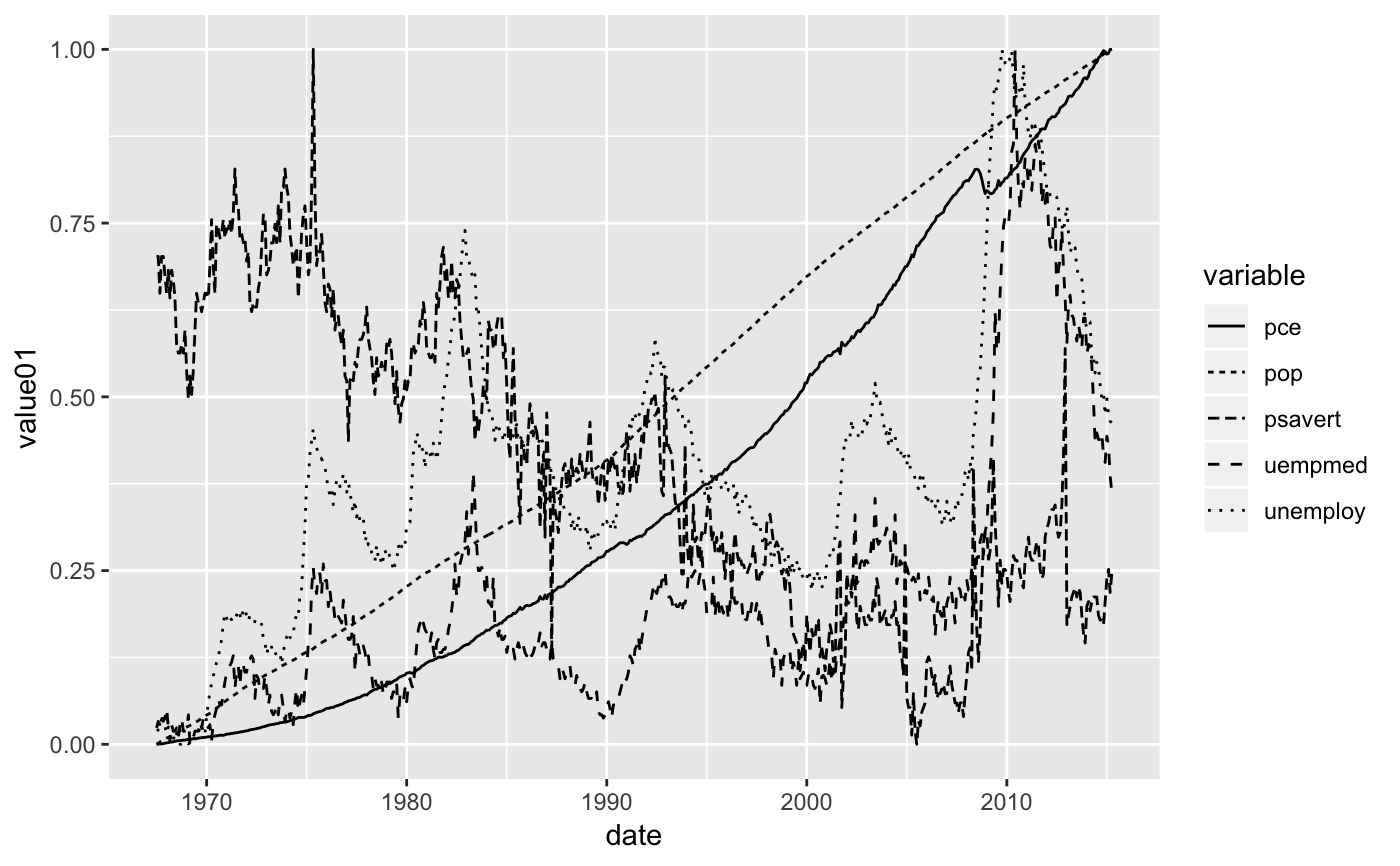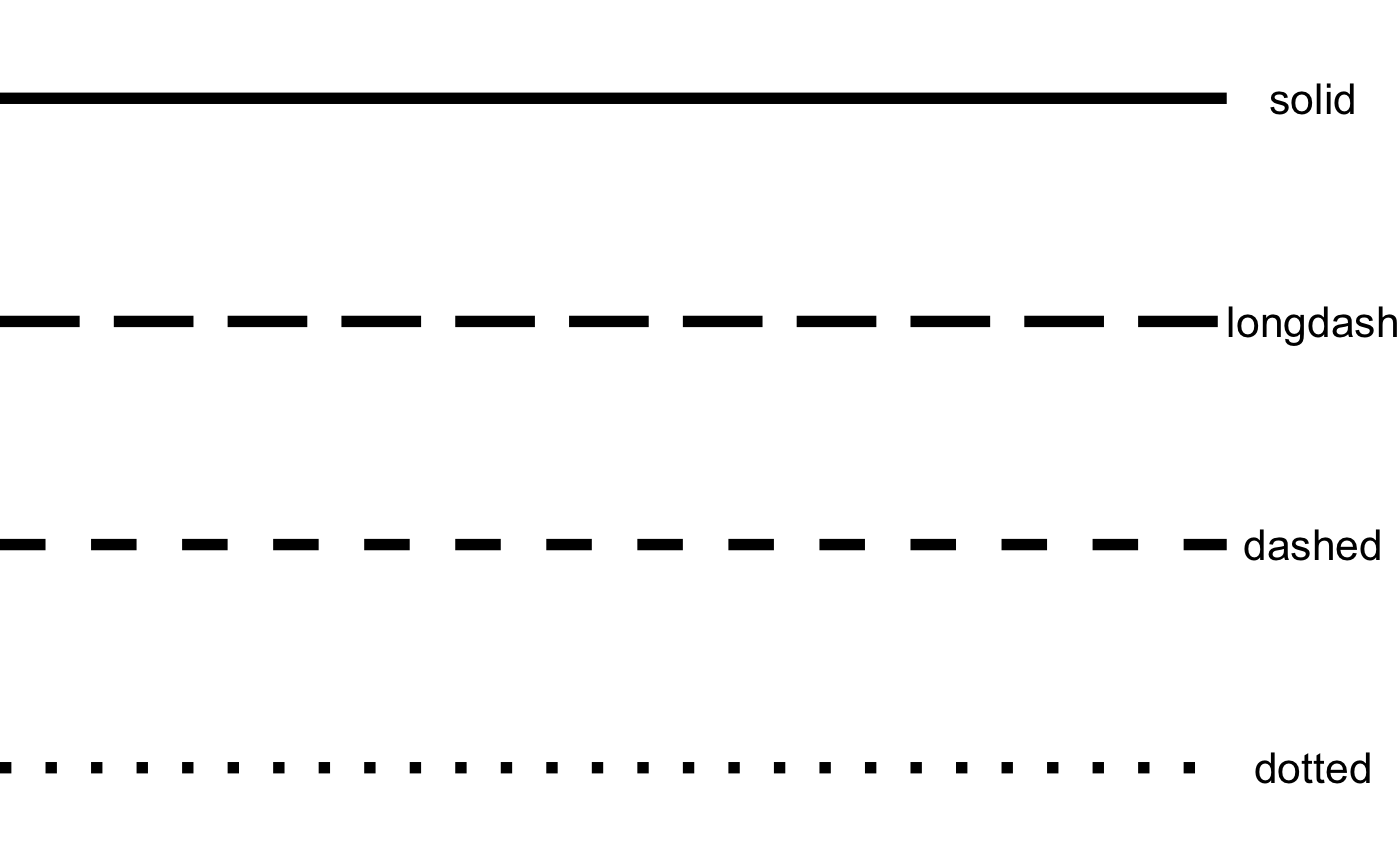Default line types based on a set supplied by Richard Pearson,
University of Manchester. Continuous values can not be mapped to
line types.
scale_linetype(..., na.value = "blank")
scale_linetype_continuous(...)
scale_linetype_discrete(..., na.value = "blank")
Arguments
| ... |
Arguments passed on to discrete_scale
- breaks
One of:
NULL for no breaks
waiver() for the default breaks computed by the
transformation object
A character vector of breaks A function that takes the limits as input and returns breaks
as output - limits
A character vector that defines possible values of the scale
and their order. - drop
Should unused factor levels be omitted from the scale?
The default, TRUE, uses the levels that appear in the data;
FALSE uses all the levels in the factor. - na.translate
Unlike continuous scales, discrete scales can easily show
missing values, and do so by default. If you want to remove missing values
from a discrete scale, specify na.translate = FALSE. - aesthetics
The names of the aesthetics that this scale works with - scale_name
The name of the scale - palette
A palette function that when called with a single integer
argument (the number of levels in the scale) returns the values that
they should take - name
The name of the scale. Used as axis or legend title. If
waiver(), the default, the name of the scale is taken from the first
mapping used for that aesthetic. If NULL, the legend title will be
omitted. - labels
One of:
NULL for no labels
waiver() for the default labels computed by the
transformation object
A character vector giving labels (must be same length as breaks) A function that takes the breaks as input and returns labels
as output - guide
A function used to create a guide or its name. See
guides() for more info. - super
The super class to use for the constructed scale |
| na.value |
The linetype to use for NA values. |
Examples


